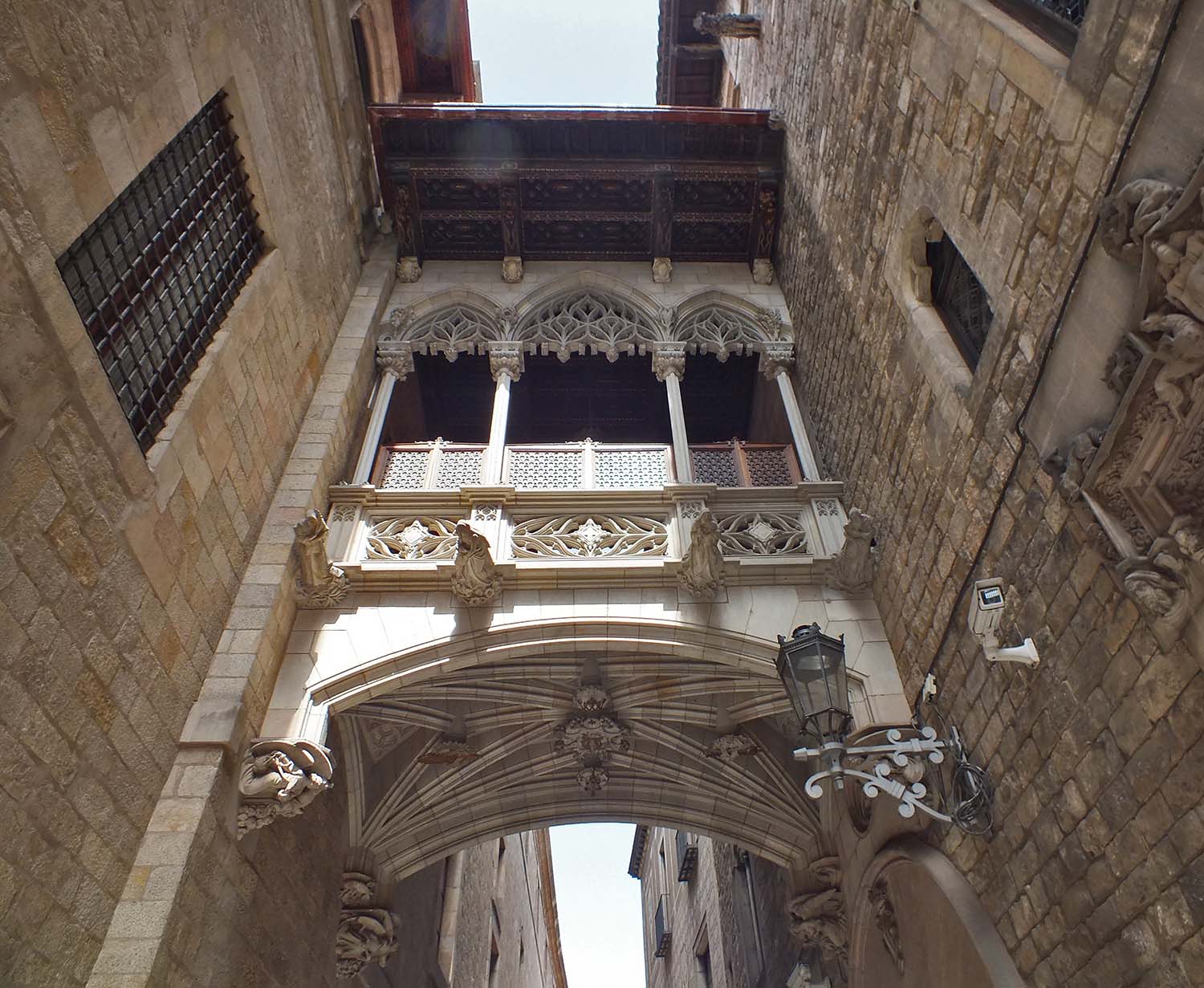The most complete Gothic quarter on the Continent. A maze of dark, twisting, medieval streets and sunny squares. The area was almost entirely enclosed by Roman walls, traces of which are still visible along the Via Laietana. This is still the city’s political hub, formed of grand squares and medieval buildings.
 Plaça del Rei. This small, well-preserved, medieval square lies in the heart of the Barri Gòtic and once busy with the comings and goings of official visitors and buyers and sellers of flour and hay. It is flanked by the 13th- to 16th-century structures of the Palau Reial (Royal Palace), and the Museu d’Història de la Ciutat. The Mirador del Rei, on the square’s western side, was used as a watchtower, and the Palau de Loctinent, on the left of the mirador (balcony), was the official home of the viceroy after Catalonia lost its independence in the 16th century.
Plaça del Rei. This small, well-preserved, medieval square lies in the heart of the Barri Gòtic and once busy with the comings and goings of official visitors and buyers and sellers of flour and hay. It is flanked by the 13th- to 16th-century structures of the Palau Reial (Royal Palace), and the Museu d’Història de la Ciutat. The Mirador del Rei, on the square’s western side, was used as a watchtower, and the Palau de Loctinent, on the left of the mirador (balcony), was the official home of the viceroy after Catalonia lost its independence in the 16th century.
Palau de la Generalitat, the Generalitat is the name of both Catalonia’s autonomous government and the building from which it governs. So far, 115 presidents of Catalonia have ruled from its 15th century Gothic interior, making it one of the few medieval buildings still in continuous use for its original purpose. When Generalitat presidents are in town they stay next door at the Casa dels Canonges, on Carrer del Bisbe. The hanging enclosed walkway joining the two buildings dates from the 1920s and was styled on Venice’s Bridge of Sighs.
Plaça de Sant Felip Neri. The pretty square of Sant Felip Neri is entered from the Baixada de Santa Eulàlia, the street where Barcelona’s patron saint met her grisly death. The square itself is peaceful, with a central fountain and baroque church, but it has a dark past. The bullet holes you see on the church’s façade next to the infant school are the evidence of a massacre of 20 children by Fascist forces in 1938. The Plaça del Pi, with its Gothic masterpiece, the Esglèsia Santa María del Pi, is a good place to take a break. The foundations of nearby Carrer de Petrixol were laid in 1465 and the street now houses some of the most famous of Barcelona’s granjes (pastry and dairy cafés).
Next to Modernism, the Gothic period had the greatest influence on Barcelona’s architecture. If you are planning a holiday in Barcelona make sure an afternoon’s walk around the 13th- to 15th-century buildings, grand plazas and narrow streets of the city’s Barri Gòtic is on your itinerary.
Barri Gòtic is just 45 minutes from our premier campsite in Spain, Vilanova Park.
By EuroResorts G+ at 14:20 15/07/2013

